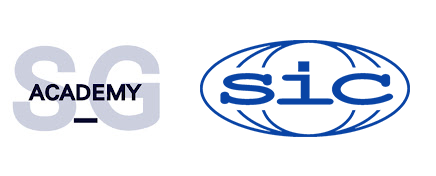Practices for supporting and improving anti-bribery management systems in accordance with the requirements of ISO 37001
This online course will provide top management of organizations with the necessary knowledge and skills to use all the capabilities of an anti-bribery management system, allowing them to effectively and efficiently manage their business.
The course contains an array of practical instruments, successfully applying which will allow you to achieve a highly effective management system that works like a charm.
Duration
45 hours
Language
English/Ukrainian
Format
100% online
Objectives
• Successfully implement a systematic approach to business management
• Apply effective business planning tools
• Accurately identify processes, measure their performance, and manage them effectively and efficiently
• Effectively allocate responsibilities and authorities
• Correctly formulate the policy and strategy of your business
• Develop risk-based thinking
• Develop objectives at the strategic, tactical and operational level
• Build a stable team, determine and maintain the competence of each employee, build a motivation system at your company
• Regularly review your management system
• Get the maximum benefit from the implementation of the «Improvement» principle
Target audience
• Successful managers and leaders who wish to achieve maximum results
• Managers of all levels – to develop their own leadership and managerial abilities, as well as to develop their own team and business
• Specialists who plan to take up managerial posts – to gain self-confidence and deep understanding of the specifics of future work
Document on completion
Top manager qualification certificate, specialization «Practices for supporting and improving anti-corruption management systems in accordance with the requirements of ISO 37001», listed in the SIC International Register
Thematic plan
The course program includes two modules.
The program is designed for 45 hours, including time for studying theoretical material and taking tests.
Objectives
Module 1 The practice for implementing, supporting and improving the anti-bribery management system in accordance with the requirements of ISO 37001
Number of hours
|
1.1 |
Foreword |
1,5 |
|
1.2 |
General provisions of the standard |
2 |
|
1.3 |
Context of the organization. Main approaches |
2 |
|
1.4 |
Leadership |
2 |
|
1.5 |
Planning |
2 |
|
1.6 |
Support (resources) |
1.5 |
|
1.7 |
Operation |
3 |
|
1.8 |
Performance evaluation |
2 |
|
1.9 |
Improvement |
1 |
|
|
Testing |
1 |
Module 2 Tools and approaches for the development and continual improvement of the management system
Number of hours
|
1.1 |
Understanding the organization and its context |
3 |
|
1.2 |
Understanding the needs and expectations of stakeholders |
1 |
|
1.3 |
MS scope and processes |
1 |
|
1.4 |
Leadership |
2 |
|
1.5 |
Policy and strategy |
1 |
|
1.6 |
Roles, responsibilities and authorities |
1 |
|
1.7 |
Actions to address risks and opportunities |
2 |
|
1.8 |
MS objectives |
1 |
|
1.9 |
Planning of changes |
1 |
|
1.10 |
Resources |
2 |
|
1.11 |
Documented information |
1 |
|
1.12 |
Operational planning and control over current activities |
1 |
|
1.13 |
Internal audits |
1 |
|
1.14 |
Management review |
2 |
|
1.15 |
Nonconformity and corrective action |
1 |
|
1.16 |
Improvement |
2 |
|
|
Testing |
2 |
